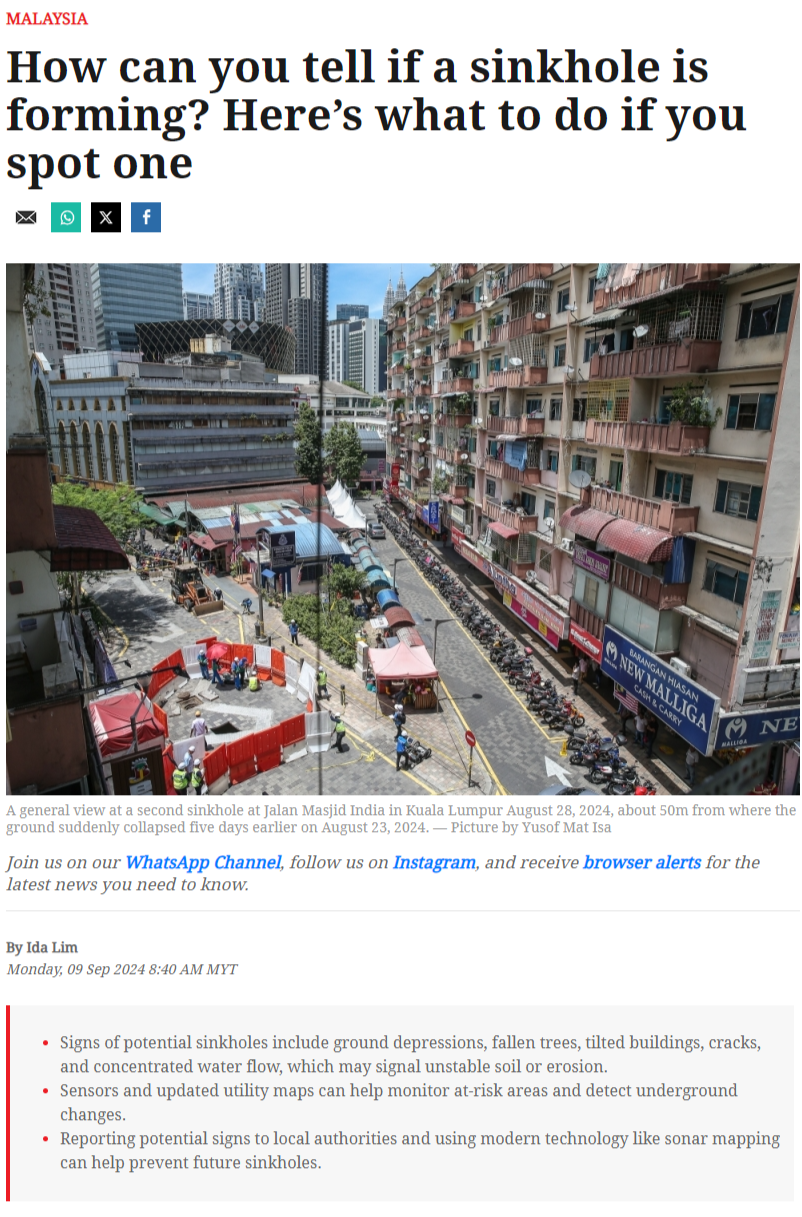
KUALA LUMPUR, Sept 9 — Have you ever wondered if there is anything you can do before a sinkhole forms or collapses? Especially after the sinkhole incident at Jalan Masjid India in Kuala Lumpur where a tourist fell into one when the ground suddenly gave way?
In an interview with Malay Mail, Prof Jeffrey Chiang Choong Luin, president of the Institution of Engineers Malaysia (IEM), listed “tell-tale signs” of potential sinkholes, such as ground depressions, fallen trees, tilted buildings, cracks in buildings and concentrated water flow.
Chiang explained that ground depressions might indicate unstable or eroded soil due to prolonged water damage. He warned that such signs might be dismissed as poor workmanship when they could signal deeper issues like soil erosion.
If signs of a potential sinkhole are detected, Chiang advises notifying local authorities like Kuala Lumpur City Hall (DBKL), which oversees public infrastructure. He said sensors can also be used to monitor hotspots for sinkholes by detecting sudden ground changes or depressions.
The Malaysian Geotechnical Society (MGS) told Malay Mail that sinkholes can sometimes form without visible signs.
“Detecting sinkholes can be very challenging as it could happen without any signs on the surface beforehand. If there are signs such as surface depressions or leaking utilities, mitigation measures can be taken earlier,” the professional association for geotechnical engineers said in an email interview.
MGS said detection of leakage from underground pipes, which can cause soil erosion and potentially lead to sinkholes, falls outside their scope and is best addressed by maintenance specialists.
MGS also said the DBKL Task Force — which it is part of — will propose measures to prevent sinkholes from happening again once the root cause of the Jalan Masjid India sinkhole is identified.
MGS advised the public to report any signs of sinkholes to local authorities. It indicated that strengthening pavements, roads, and buildings in the affected area can be considered after the investigation concludes.
Strengthening works involve improving soil and infrastructure around sinkholes, while mitigation works address the underlying causes of sinkholes to prevent a recurrence, MGS said.
Chiang noted that buildings are generally safe due to sound foundations designed to support heavier loads, and that the focus should be on strengthening roads and pavements that have shallower foundation bases and are more vulnerable.
He stressed the importance of mapping high-risk areas and updating utility maps for effective strengthening and mitigation.
He urged authorities to use available technologies, such as sonar wave and geophone mapping, to accurately assess ground conditions and enhance sinkhole prevention efforts.
He said reliable and updated information is crucial for managing and preventing sinkholes in the future.


